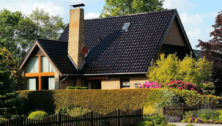New York Times: Gravel Gardens Bring Their Own Beauty

Andrew Bunting had made regular visits to the gravel garden at Chanticleer Gardens in Wayne for years, not too far from his home in Swarthmore, writes Margaret Roach for The New York Times.
Bunting, vice president of public gardens and landscapes for the Pennsylvania Horticultural Society, turned from admiring the gardens to creating them when he found himself at home in 2020 in his COVID office, looking out at his “meadow-ish front garden” each day.
“I remember thinking, ‘This is tired; it needs redoing.’”
He was also tired of two tenacious weeds—celandine and Star of Bethlehem.
Gravel gardens are usually seen as a convenience, creating a garden with 80 percent less work, but they bring their own beauty worthy of consideration.
Jeff Epping, director of horticulture at Olbrich Botanical Gardens in Madison, Wis. feels the word gravel doesn’t begin to describe what’s possible.
Gravel isn’t the lead character. The plants, native grasses and flowering perennials are the stars.
To Bunting’s liking, gravel gardens have no mulch layer, just a four- or five-inch deep foundation that discourages weeds from taking root, minimizes runoff, and directs water to where roots can use it.
Read more in the New York Times about creating a gravel garden.
Learn how to make your own gravel garden.
Join Our Community
Never miss a Delaware County story!
"*" indicates required fields
















![95000-1023_ACJ_BannerAd[1]](https://delco.today/wp-content/uploads/sites/3/2023/03/95000-1023_ACJ_BannerAd1.jpg)














